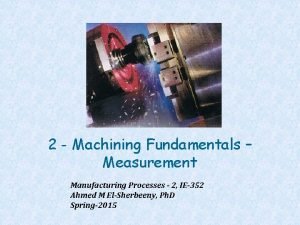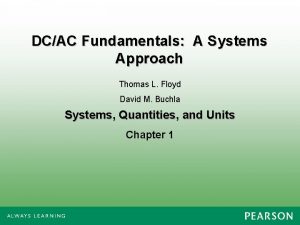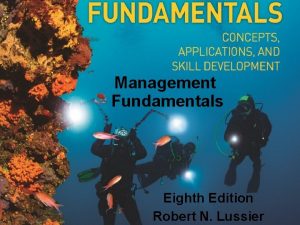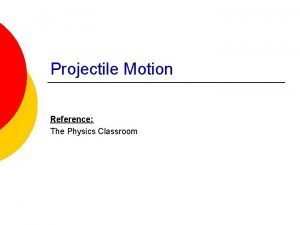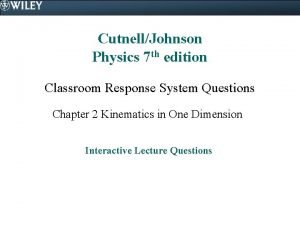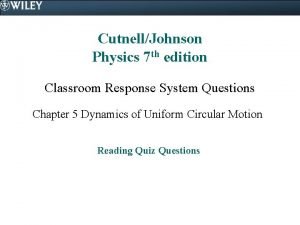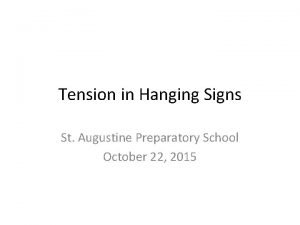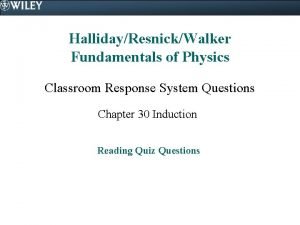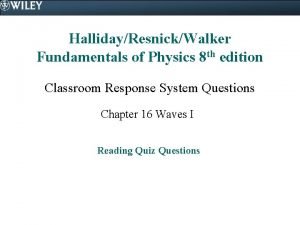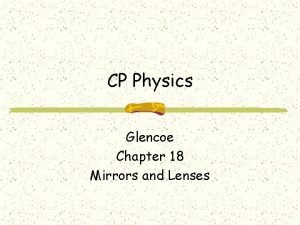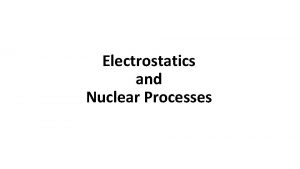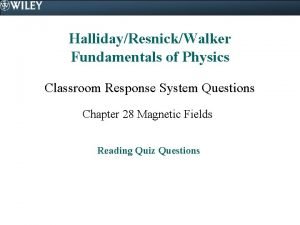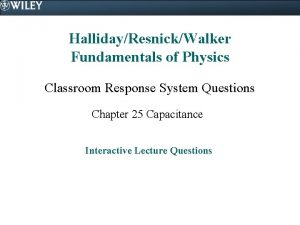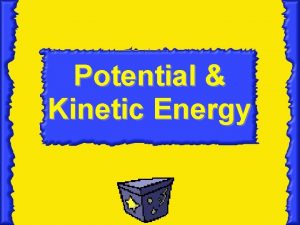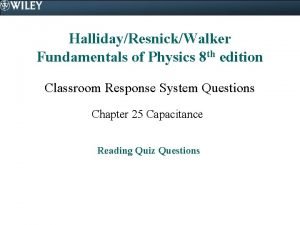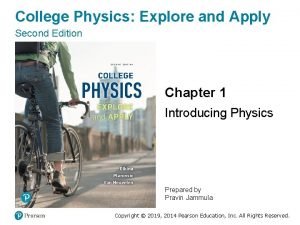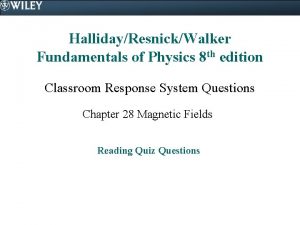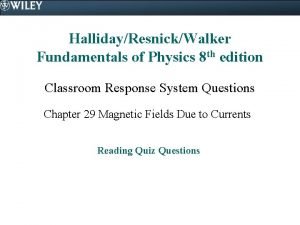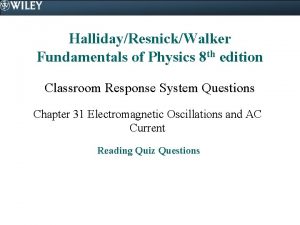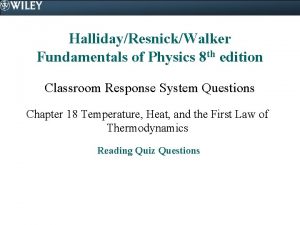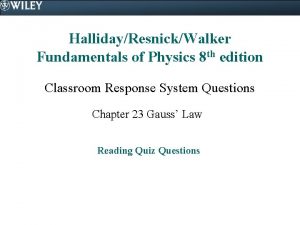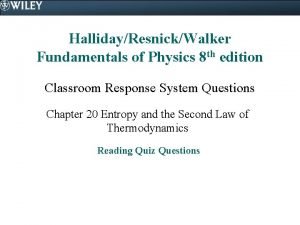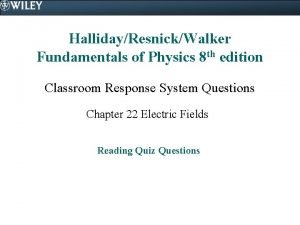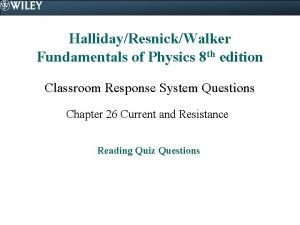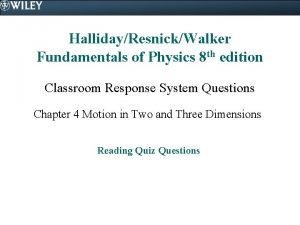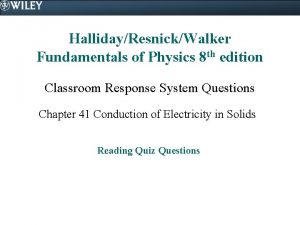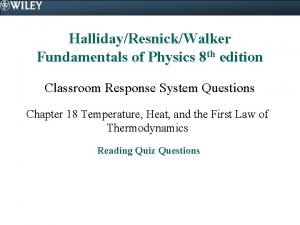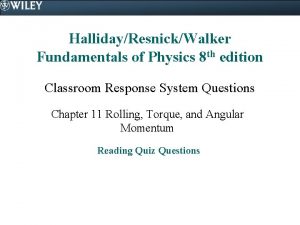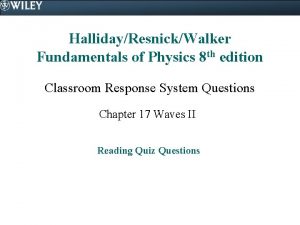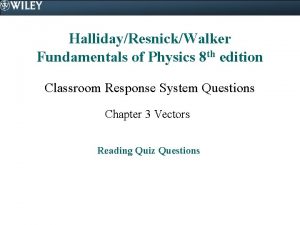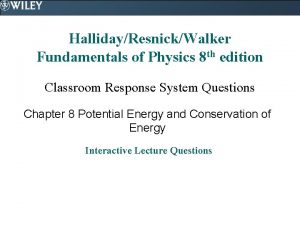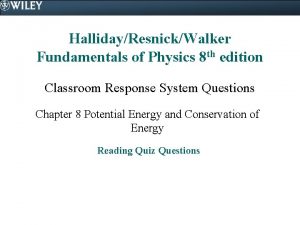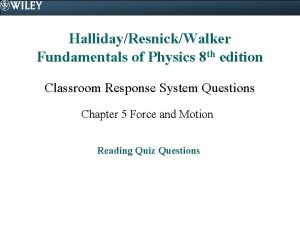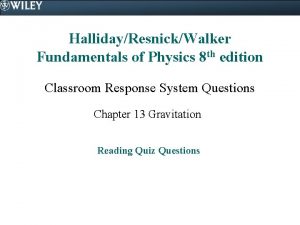HallidayResnickWalker Fundamentals of Physics 8 th edition Classroom











































- Slides: 43

Halliday/Resnick/Walker Fundamentals of Physics 8 th edition Classroom Response System Questions Chapter 21 Electric Charge Reading Quiz Questions

21. 2. 1. Which one of the following statements concerning the electric force is true? a) Two charged objects with identical charges will exert an attractive force on one another. b) It is possible for a small negatively-charged particle to float above a negatively charged surface. c) A positively-charged object is attracted toward another positivelycharged object. d) The electric force cannot alter the motion of an object. e) Newton’s third law of motion does not apply to the electrostatic force.

21. 2. 1. Which one of the following statements concerning the electric force is true? a) Two charged objects with identical charges will exert an attractive force on one another. b) It is possible for a small negatively-charged particle to float above a negatively charged surface. c) A positively-charged object is attracted toward another positivelycharged object. d) The electric force cannot alter the motion of an object. e) Newton’s third law of motion does not apply to the electrostatic force.

21. 2. 2. Which one of the following scientists is credited with assigning the “ ” and “+” signs used to describe the two kinds of charge? a) Lord Kelvin b) Isaac Newton c) James Watt d) Leonardo Da Vinci e) Benjamin Franklin

21. 2. 2. Which one of the following scientists is credited with assigning the “ ” and “+” signs used to describe the two kinds of charge? a) Lord Kelvin b) Isaac Newton c) James Watt d) Leonardo Da Vinci e) Benjamin Franklin

21. 3. 1. Complete the following sentence: When wool is rubbed along a copper rod, a) the copper becomes positively charged and the wool becomes negatively charged. b) the copper and the wool become positively charged. c) the copper becomes negatively charged and the wool becomes positively charged. d) the copper and the wool become negatively charged. e) the copper becomes negatively charged and the wool remains electrically neutral.

21. 3. 1. Complete the following sentence: When wool is rubbed along a copper rod, a) the copper becomes positively charged and the wool becomes negatively charged. b) the copper and the wool become positively charged. c) the copper becomes negatively charged and the wool becomes positively charged. d) the copper and the wool become negatively charged. e) the copper becomes negatively charged and the wool remains electrically neutral.

21. 3. 2. Complete the following sentence: an electric insulator has a) the ability to easily conduct electricity, but does not easily conduct heat. b) few electrons available to conduct electricity. c) the ability to easily conduct electricity and heat. d) no ability to conduct electricity. e) many free electrons available to conduct electricity.

21. 3. 2. Complete the following sentence: an electric insulator has a) the ability to easily conduct electricity, but does not easily conduct heat. b) few electrons available to conduct electricity. c) the ability to easily conduct electricity and heat. d) no ability to conduct electricity. e) many free electrons available to conduct electricity.

21. 3. 3. Which one of the following statements concerning electrical conductors is false? a) Rubber is an excellent electrical conductor. b) A material that is a good electrical conductor has many free electrons that can easily move around inside the material. c) When a positively-charged object is moved into contact with an electrical conductor, electrons move toward the object. d) Materials that are good thermal conductors are often good electrical conductors. e) Most metals are very good electrical conductors.

21. 3. 3. Which one of the following statements concerning electrical conductors is false? a) Rubber is an excellent electrical conductor. b) A material that is a good electrical conductor has many free electrons that can easily move around inside the material. c) When a positively-charged object is moved into contact with an electrical conductor, electrons move toward the object. d) Materials that are good thermal conductors are often good electrical conductors. e) Most metals are very good electrical conductors.

21. 3. 4. Which of the following terms is used to describe a material that does not allow electrons to easily move through it? a) conductor b) resistor c) insulator d) transformer e) inductor

21. 3. 4. Which of the following terms is used to describe a material that does not allow electrons to easily move through it? a) conductor b) resistor c) insulator d) transformer e) inductor

21. 3. 5. Which of the following statements describes an object as having an induced charge? a) A glass rod is rubbed with silk. b) A negatively-charged object is brought into contact with an initially uncharged conductor. When they are separated, both objects are negatively charged. c) A rubber rod is rubbed with animal fur. d) A positively-charged object is brought near with an initially uncharged insulator. The surface of the insulator becomes slightly negatively charged. e) As you grab a door knob in the winter time, you feel a slight electric spark.

21. 3. 5. Which of the following statements describes an object as having an induced charge? a) A glass rod is rubbed with silk. b) A negatively-charged object is brought into contact with an initially uncharged conductor. When they are separated, both objects are negatively charged. c) A rubber rod is rubbed with animal fur. d) A positively-charged object is brought near with an initially uncharged insulator. The surface of the insulator becomes slightly negatively charged. e) As you grab a door knob in the winter time, you feel a slight electric spark.

21. 3. 6. A conductor that is initially electrically neutral is touched by a rod that has a net positive charge. Which of the following statements describing the conductor after the rod is removed is true? a) The conductor will have a net positive charge. b) The conductor will electrically neutral. c) The conductor will have a net negative charge.

21. 3. 6. A conductor that is initially electrically neutral is touched by a rod that has a net positive charge. Which of the following statements describing the conductor after the rod is removed is true? a) The conductor will have a net positive charge. b) The conductor will electrically neutral. c) The conductor will have a net negative charge.

21. 3. 7. Silicon is an example of what type of material? a) metal b) insulator c) semiconductor d) superconductor e) perfect conductor

21. 3. 7. Silicon is an example of what type of material? a) metal b) insulator c) semiconductor d) superconductor e) perfect conductor

21. 4. 1. Two positively charged particles are separated by a distance r. The force on particle 1 is F due to particle 2. The force on particle 2 is 2 F due to particle 1. Is the previous sentence true or false? Explain why this is the case. a) The sentence is true, if the net charge of particle 1 is twice that of particle 2. b) The sentence is false because the forces on each of the two objects are equal in magnitude, but opposite in direction. c) The sentence is true since the particles are separated by a distance r. d) The sentence is false because two positively charged particles cannot exert a force on each other.

21. 4. 1. Two positively charged particles are separated by a distance r. The force on particle 1 is F due to particle 2. The force on particle 2 is 2 F due to particle 1. Is the previous sentence true or false? Explain why this is the case. a) The sentence is true, if the net charge of particle 1 is twice that of particle 2. b) The sentence is false because the forces on each of the two objects are equal in magnitude, but opposite in direction. c) The sentence is true since the particles are separated by a distance r. d) The sentence is false because two positively charged particles cannot exert a force on each other.

21. 4. 2. Two positively charged particles are separated by a distance r. Which of the following statements concerning the electrostatic force between acting on each particle due to the presence of the other is true? a) The electrostatic force may be calculated using Faraday’s law. b) The electrostatic force depends on the masses of the two particles. c) The electrostatic force depends on r 2. d) The electrostatic force increases as r is increased. e) The electrostatic force is on each particle is directed toward the other particle.

21. 4. 2. Two positively charged particles are separated by a distance r. Which of the following statements concerning the electrostatic force between acting on each particle due to the presence of the other is true? a) The electrostatic force may be calculated using Faraday’s law. b) The electrostatic force depends on the masses of the two particles. c) The electrostatic force depends on r 2. d) The electrostatic force increases as r is increased. e) The electrostatic force is on each particle is directed toward the other particle.

21. 4. 3. Coulomb’s law is similar to Newton’s law of gravitation in several ways. Which one of the statements is not a similarity between these two laws? a) In both laws, the force is inversely proportional to the square of the distance between two particles. b) In both laws, the force decreases with increasing distance between the two particles. c) In both laws, the force is proportional to the product of an intrinsic property of each of the two particles. d) In both laws, the force is always one of attraction between the two particles. e) In both laws, there is a proportionality constant that appears.

21. 4. 3. Coulomb’s law is similar to Newton’s law of gravitation in several ways. Which one of the statements is not a similarity between these two laws? a) In both laws, the force is inversely proportional to the square of the distance between two particles. b) In both laws, the force decreases with increasing distance between the two particles. c) In both laws, the force is proportional to the product of an intrinsic property of each of the two particles. d) In both laws, the force is always one of attraction between the two particles. e) In both laws, there is a proportionality constant that appears.

21. 4. 4. A charged particle, labeled A, is located at the midpoint between two other charged particles, labeled B and C, as shown. The sign of the charges on all three particles is the same. When particle A is released, it starts drifting toward B. What can be determined from this behavior? a) The charge on A is larger than the charge on B. b) The charge on A is larger than the charge on C. c) The charge on C is larger than the charge on B. d) The charge on B is larger than the charge on A. e) The charge on B is larger than the charge on C.

21. 4. 4. A charged particle, labeled A, is located at the midpoint between two other charged particles, labeled B and C, as shown. The sign of the charges on all three particles is the same. When particle A is released, it starts drifting toward B. What can be determined from this behavior? a) The charge on A is larger than the charge on B. b) The charge on A is larger than the charge on C. c) The charge on C is larger than the charge on B. d) The charge on B is larger than the charge on A. e) The charge on B is larger than the charge on C.

21. 4. 5. As shown in the drawing, a positively charged particle remains stationary between particles A and B. The positively charged particle is one-quarter the distance between the two other particles, as shown. What can be concluded from the situation? a) Nothing can be concluded without more information. b) A and B are positively charged. c) A and B are negatively charged. d) A is positively charged and B is negatively charged. e) B is positively charged and A is negatively charged.

21. 4. 5. As shown in the drawing, a positively charged particle remains stationary between particles A and B. The positively charged particle is one-quarter the distance between the two other particles, as shown. What can be concluded from the situation? a) Nothing can be concluded without more information. b) A and B are positively charged. c) A and B are negatively charged. d) A is positively charged and B is negatively charged. e) B is positively charged and A is negatively charged.

21. 4. 6. The unit of electrical current is the ampere (A). Which one of the combinations of units is equivalent to the ampere? a) C s b) C/s c) N m/s d) J s e) kg m 2/s

21. 4. 6. The unit of electrical current is the ampere (A). Which one of the combinations of units is equivalent to the ampere? a) C s b) C/s c) N m/s d) J s e) kg m 2/s

21. 5. 1. Which one of the following values is the smallest possible amount of free charge that has been discovered? a) 5. 34 10 20 coulombs b) 1. 60 10 19 coulombs c) 1. 38 10 23 coulombs d) 6. 63 10 34 coulombs e) 8. 85 10 12 coulombs

21. 5. 1. Which one of the following values is the smallest possible amount of free charge that has been discovered? a) 5. 34 10 20 coulombs b) 1. 60 10 19 coulombs c) 1. 38 10 23 coulombs d) 6. 63 10 34 coulombs e) 8. 85 10 12 coulombs

21. 5. 2. Which one of the following statements concerning the net electric charge on an object is true? a) An object with a net negative charge has an excess number of protons. b) The net charge can have any value greater than 1. 60 10 19 coulombs. c) The net charge on an object is always a negative number. d) Since protons are larger, a proton carry more charge than an electron. e) The net charge is quantized.

21. 5. 2. Which one of the following statements concerning the net electric charge on an object is true? a) An object with a net negative charge has an excess number of protons. b) The net charge can have any value greater than 1. 60 10 19 coulombs. c) The net charge on an object is always a negative number. d) Since protons are larger, a proton carry more charge than an electron. e) The net charge is quantized.

21. 5. 3. Which one of the following rules, laws, or principles describes how the net electric charge of an isolated system undergoing any process remains constant? a) Coulomb’s principle b) rule of seventy-two c) principle of electric induction d) law of the conservation of electric charge e) law of triboelectric synthesis

21. 5. 3. Which one of the following rules, laws, or principles describes how the net electric charge of an isolated system undergoing any process remains constant? a) Coulomb’s principle b) rule of seventy-two c) principle of electric induction d) law of the conservation of electric charge e) law of triboelectric synthesis

21. 5. 4. Which one of the following statements is false? a) The total number of positive and negative charges within a system may change. b) Electric charge is quantized. c) Electric charge is conserved. d) A system may have a charge that is equal to two-thirds of the charge on an electron. e) The convention is to consider the electron as having a negative charge.

21. 5. 4. Which one of the following statements is false? a) The total number of positive and negative charges within a system may change. b) Electric charge is quantized. c) Electric charge is conserved. d) A system may have a charge that is equal to two-thirds of the charge on an electron. e) The convention is to consider the electron as having a negative charge.

21. 6. 1. Which one of the following statements is a consequence of charge being conserved? a) The difference between the number of positive and negative charges does not change for a given system. b) If you examine a system at different times, the total number of charges will change. c) Energy within the system is also conserved. d) The positive and negative charges within a system must be quantized. e) The numbers of electrons and protons for a given system cannot change.

21. 6. 1. Which one of the following statements is a consequence of charge being conserved? a) The difference between the number of positive and negative charges does not change for a given system. b) If you examine a system at different times, the total number of charges will change. c) Energy within the system is also conserved. d) The positive and negative charges within a system must be quantized. e) The numbers of electrons and protons for a given system cannot change.

21. 6. 2. When an electron (charge 1. 60 × 10 19 C) and a positron (charge +1. 60 × 10 19 C) come together, they annihilate one another. Two particles of light (photons) are emitted from the annihilation. This is an example of what type of physical phenomena? a) charge quantization b) charge separation c) Coulomb force d) charge density wave e) charge conservation

21. 6. 2. When an electron (charge 1. 60 × 10 19 C) and a positron (charge +1. 60 × 10 19 C) come together, they annihilate one another. Two particles of light (photons) are emitted from the annihilation. This is an example of what type of physical phenomena? a) charge quantization b) charge separation c) Coulomb force d) charge density wave e) charge conservation
 University physics with modern physics fifteenth edition
University physics with modern physics fifteenth edition Fundamentals of information systems 9th edition
Fundamentals of information systems 9th edition Fundamentals of information systems 9th edition
Fundamentals of information systems 9th edition Fluid mechanics fundamentals and applications 3rd edition
Fluid mechanics fundamentals and applications 3rd edition Digital fundamentals tenth edition floyd
Digital fundamentals tenth edition floyd Machining fundamentals 10th edition
Machining fundamentals 10th edition Fundamentals of organizational communication 9th edition
Fundamentals of organizational communication 9th edition Fundamentals of organizational communication 9th edition
Fundamentals of organizational communication 9th edition Sujata madan
Sujata madan Digital fundamentals 10th edition
Digital fundamentals 10th edition Floyd digital fundamentals 10th edition pdf
Floyd digital fundamentals 10th edition pdf Dc/ac fundamentals a systems approach
Dc/ac fundamentals a systems approach Computer security fundamentals 4th edition
Computer security fundamentals 4th edition Management fundamentals 8th edition
Management fundamentals 8th edition Fundamentals of information systems
Fundamentals of information systems Fundamentals of corporate finance third canadian edition
Fundamentals of corporate finance third canadian edition Fundamentals of corporate finance fifth edition
Fundamentals of corporate finance fifth edition Fundamentals of corporate finance 6th edition
Fundamentals of corporate finance 6th edition Abnormal psychology comer 9th edition
Abnormal psychology comer 9th edition Fundamentals of information systems 9th edition
Fundamentals of information systems 9th edition Critical radius of insulation for cylinder
Critical radius of insulation for cylinder The fundamentals of political science research 2nd edition
The fundamentals of political science research 2nd edition Btech smart classes
Btech smart classes Mis chapter 6
Mis chapter 6 Chapter 1
Chapter 1 Physics classroom
Physics classroom Physics classroom
Physics classroom Centripetal acceleration physics classroom
Centripetal acceleration physics classroom Hanging sign problem physics
Hanging sign problem physics Unit of flux
Unit of flux Circular functions
Circular functions Physics classroom lenses and mirrors
Physics classroom lenses and mirrors Electrostatics physics classroom
Electrostatics physics classroom Gauss law physics classroom
Gauss law physics classroom Physics classroom magnetic field
Physics classroom magnetic field Capacitance physics classroom
Capacitance physics classroom Physics classroom kinetic energy
Physics classroom kinetic energy Farad is equivalent to
Farad is equivalent to College physics explore and apply 2nd edition answers
College physics explore and apply 2nd edition answers Modern physics vs classical physics
Modern physics vs classical physics Physics hl ia ideas
Physics hl ia ideas Certification in hotel industry analytics
Certification in hotel industry analytics Water treatment fundamentals
Water treatment fundamentals Take charge today the fundamentals of investing
Take charge today the fundamentals of investing





